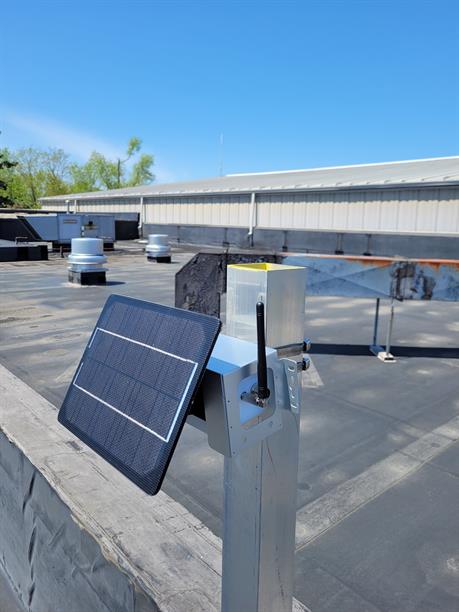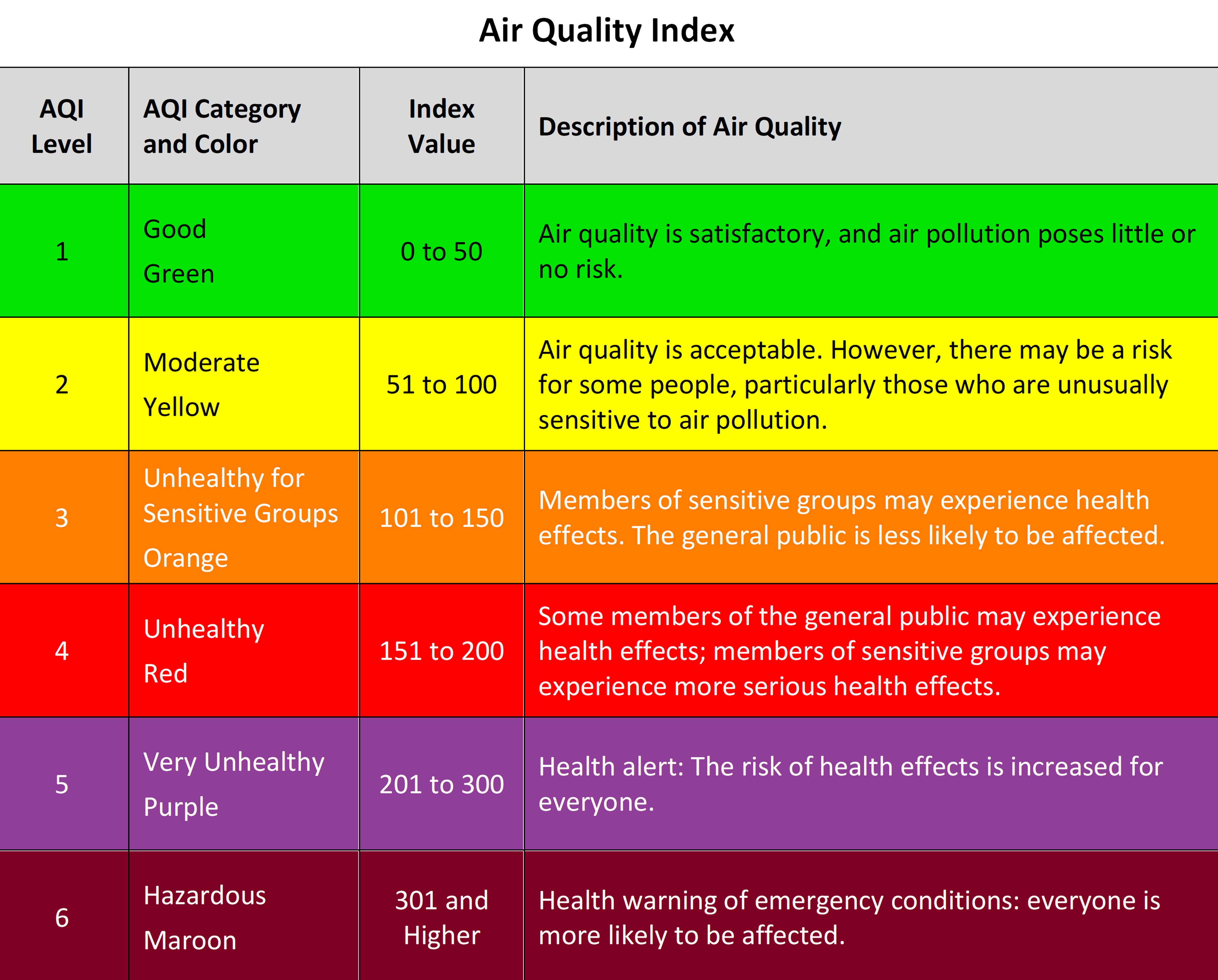Air Quality Data
Welcome! All of the data gathered by our network of air quality monitors (see the
Air Quality Monitoring in Ann Arbor section of this page for more information) is publicly available. You can explore the data on our Air Quality Data Visualization Platform at a2gov.org/airdata, which includes graphs of AQI and individual pollutant concentrations over time. Additionally, you can download the raw data from these sensors. Please note that while the data provided by these sensors is monitored for accuracy, it is not EPA reference data.
Air Quality Overview
Clean, healthy air is critical to ensuring our health and community vitality. Research has linked air pollutants such as ozone and particulate matter to lung and heart disease, increased asthma rates, and other health problems. In our community, the major sources of these air pollutants include emissions from internal combustion engines (i.e., tailpipe emissions from cars), emissions from power plants, and emissions from indoor and outdoor appliances that run on fuels such as natural gas, diesel, propane, and gasoline. In addition, climate change is negatively impacting air quality by causing more extreme heat days, which both drives up cooling needs (and power plant emissions) and creates the conditions for the formation of ground level ozone. Climate change is also leading to more wildfires and the associated increase in particulate matter. Learn more about the impacts of climate change on air quality from the
Fourth National Climate Assessment.


Air Quality Monitoring in Ann Arbor
In
order to monitor our community's ambient air quality, OSI is installing a network of air quality monitors across the city. So far, we have installed two of these monitors: one at the Ann Arbor Farmers Market in Kerrytown and one at Veterans Memorial Park. Additional monitor installations are planned for 2024 and beyond!
These solar-powered air quality monitors measure pollutants such as particulate matter (PM) and nitrogen dioxide (NO2). These pollutants, when at high enough concentrations, can have negative impacts on both human health and the environment. Additionally, concentrations of these pollutants can be used to calculate the Air Quality Index (AQI), which is the reporting index used by the United States EPA. AQI values are calculated using the individual concentrations of five major pollutants (ozone, particulate matter, carbon monoxide, sulfur dioxide, and nitrogen dioxide), with the pollutant at the highest concentration determining the value of the AQI. AQI values range from 0 to 500, with higher values representing greater levels of air pollution. These values are divided into six different levels of AQI (an AQI of 1, for example, corresponds to AQI values between 0-50 and is considered "good" air quality, while an AQI of 6 corresponds to AQI values above 301 and is considered "hazardous."). See the
above table from the EPA for a visualization of the different AQI levels. By monitoring AQI, we can be alerted to potentially harmful concentrations of air pollutants and gather data on the sources of these high concentrations.
Idling Reduction Ordinance
Did you know that vehicle idling constitutes 1.6% of all U.S. greenhouse gas emissions, double the total emissions from the steel and iron manufacturing in the country? This is partly why, effective July 1, 2017, Ann Arbor has an
Idling Reduction Ordinance. This ordinance specifies that:
- Commercial vehicles have a 5-minute idling limit city-wide and no idling while vehicles are unoccupied.
- Non-commercial vehicles have a 5-minute idling limit in signed "No Idling" zones and no idling while vehicles are unoccupied.
*The ordinance does not impact cars on residential property or in driveways.
For violations of the ordinance, citations can be issued. If you observe a violation of the ordinance, please immediately report the violation by contacting Community Standards at 734-794-6942 or dispatch at 734-994-2911, so that an officer may be sent to the site to confirm the violation.
Do Your Part
1. Turn your engine off. Whether you're picking up your child from school or using the ATM, turn off your engine if you're stopped for longer than ten seconds.
2. Reduce warm-up idling. Experts agree modern engines require only a short idle period after engine start—even in very cold temperatures. Driving slowly for the first mile or two is the best way for the car to warm up. Long idling periods can harm your engine and waste gas.
3. Spread the word. Most people idle out of habit. Encourage your family, friends and neighbors to help protect children's health, the environment, and save money by turning off their vehicles.
Electrification
A key piece of A2ZERO (Strategy 2) focuses on mass electrification of buildings, appliances, and vehicles. This work is designed to improve indoor air quality, comfort, and safety, all while reducing local and regional greenhouse gas emissions. If you're interested in learning more about the City's efforts to electrify, please visit
www.a2gov.org/electrify.
Indoor Air Quality Testing
Frequent testing of indoor air and water quality is important to our health and safety. For more information on how to test for air and water pollutants - as well as other dangerous substances - in your home, check out
this guide from the Safety, Health, and Consumer Council and SafeHome.org. The Ann Arbor District Library has air quality sensors in their lending library -
check one out today to measure the air quality in your home!
